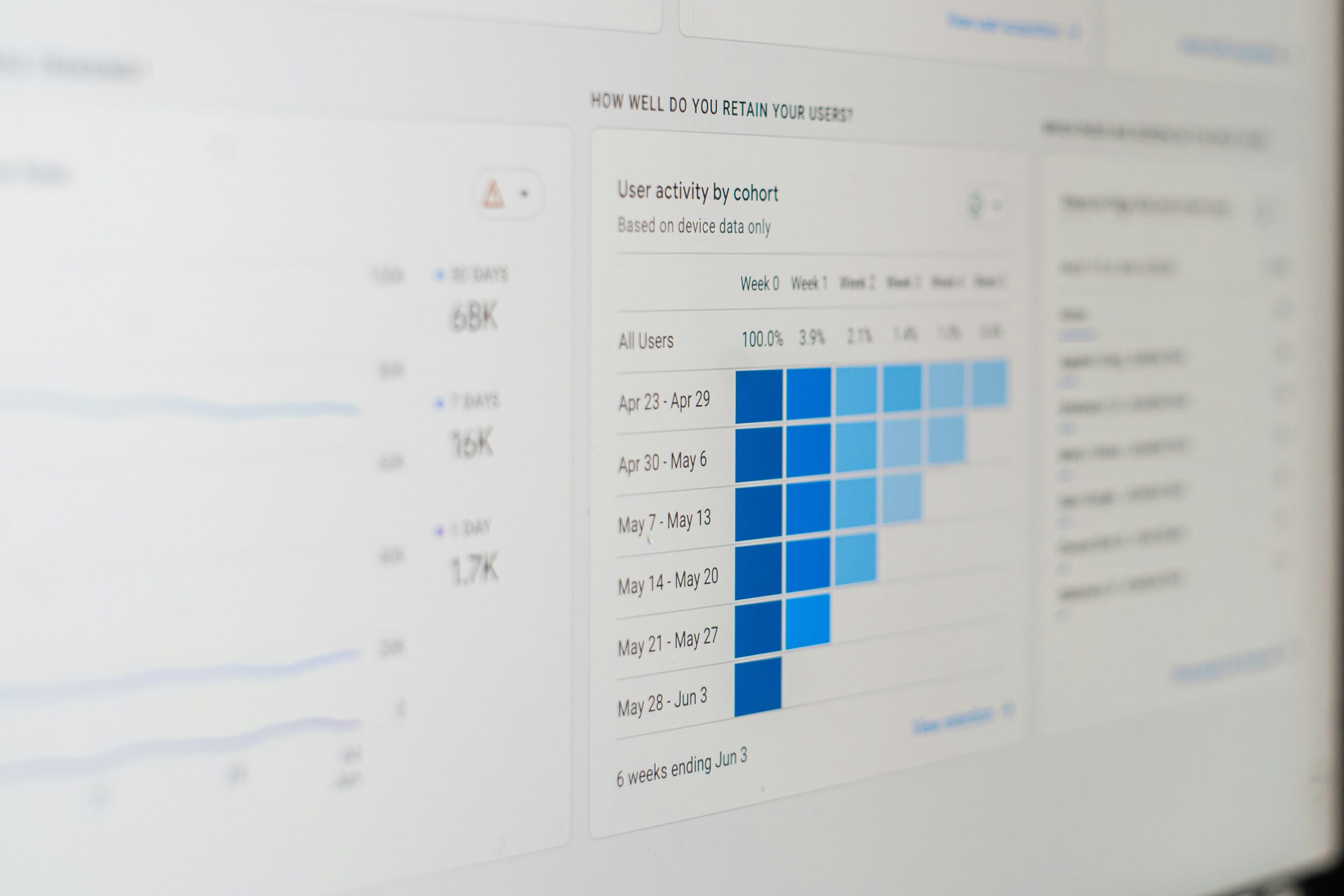
Struggling to measure the true impact of your marketing efforts? Real-time marketing performance metrics offer the clarity you need to optimize campaigns and boost ROI. In this article, you’ll discover which metrics matter most, how to build a responsive data-tracking system, and proven techniques for interpreting real-time insights. With these strategies, marketers can make data-driven decisions on the fly—maximizing results and ensuring every dollar spent delivers measurable value. Let’s dive into how real-time analytics can sharpen your marketing strategy and drive sustainable growth.
Key Takeaways
- Real-time metrics allow businesses to adjust marketing strategies quickly for better results.
- Understanding customer acquisition cost helps improve spending efficiency and brand awareness.
- Conversion rates indicate campaign effectiveness and are crucial for optimizing marketing efforts.
- Utilizing automation tools streamlines data collection and enhances insights into marketing performance.
- Establishing clear KPIs ensures effective measurement and tracking of marketing success.
Understanding Real-Time Marketing Performance Metrics

Real-time marketing performance metrics allow businesses to measure the impact of their strategies as they unfold. These metrics are instrumental in fine-tuning content marketing initiatives, improving customer engagement, and gauging long-term customer value. In the sections that follow, we’ll explore core methods for data collection, the role of integrated analytics systems in evaluating campaign success, and how real-time insights shape more agile and effective marketing strategies.
Defining Real-Time Marketing Performance Metrics
Real-time performance metrics are critical for assessing how well a marketing campaign connects with its audience in the moment. By monitoring activities such as landing page traffic, marketers gain immediate visibility into which tactics are generating leads and which require adjustment. Leveraging automation tools enables instant access to performance data, empowering teams to make quick, informed decisions that increase return on investment and optimize overall campaign effectiveness.
Importance of Real-Time Insights for Marketing Strategies
Real-time insights significantly enhance strategic agility by providing up-to-the-minute visibility into key performance indicators such as bounce rates, engagement levels, and revenue generation. This immediate feedback loop allows marketers to identify emerging trends, make timely adjustments, and improve user experience. When combined with centralized data platforms, these insights also support competitive benchmarking and faster decision-making—resulting in more effective marketing execution and improved ROI.
Key Metrics That Impact ROI

Tracking the right performance metrics is essential for understanding and improving the return on marketing investment. Core indicators such as conversion rates and customer acquisition cost (CAC) reveal how efficiently marketing dollars are spent and how effectively campaigns influence buyer behavior. Meanwhile, understanding the lifetime value of a customer (LTV) provides a long-term view of revenue potential, while campaign engagement and Return on Ad Spend (ROAS) offer real-time feedback on campaign impact. Together, these metrics form the foundation of a data-driven marketing strategy focused on sustainable growth and profitability.
Conversion Rates and Their Significance
Conversion rates serve as a primary indicator of campaign performance, reflecting the percentage of users who complete a desired action—such as making a purchase, filling out a form, or subscribing to a newsletter. Monitoring conversion trends enables marketers to evaluate whether their messaging, design, or targeting is effective. By analyzing this data, marketing teams can make real-time adjustments that improve user flow, refine calls to action, and ultimately increase overall ROI.
Customer Acquisition Cost Analysis
Customer Acquisition Cost (CAC) is a critical metric for evaluating how cost-effectively a business is bringing in new customers. Calculating CAC involves dividing total marketing and sales expenses by the number of customers acquired over a specific period. Keeping this figure low—without compromising on lead quality—helps improve overall marketing efficiency. When CAC is analyzed alongside metrics like churn rate and customer satisfaction, it enables better budgeting decisions and supports strategies aimed at long-term growth.
Lifetime Value of a Customer
The Lifetime Value (LTV) of a customer measures the total revenue a business can expect from a customer throughout the duration of their relationship. Understanding LTV helps allocate marketing resources more effectively by identifying high-value customer segments worth retaining. Advanced analytics techniques, including predictive modeling and machine learning, can enhance LTV accuracy and segmentation. These insights enable marketing teams to prioritize personalized retention strategies and better align campaign goals with long-term profitability.
Campaign Engagement Metrics
Engagement metrics provide real-time insights into how audiences interact with marketing content. Key indicators include click-through rates, time on site, social shares, and ad interactions. These metrics reveal whether the content resonates with the target audience and can be used to identify drop-off points in the customer journey. Incorporating tools such as sentiment analysis enhances this understanding by measuring emotional response, allowing marketers to tailor campaigns to audience preferences and strengthen brand connection.
Return on Ad Spend (ROAS)
Return on Ad Spend (ROAS) is a key performance metric that calculates the revenue earned for every dollar spent on advertising. It directly ties campaign performance to profitability and serves as a benchmark for scaling paid media efforts. A strong ROAS indicates that ad creatives and targeting strategies are aligned with audience expectations. Marketers can use ROAS to optimize ad placements, test new messaging, and ensure that spend is driving measurable value—particularly in high-competition channels like search and social.
Setting Up Real-Time Data Tracking

Maximizing ROI with real-time marketing insights begins with a robust data-tracking infrastructure. Effective tracking allows marketers to monitor key performance indicators (KPIs) as campaigns unfold, enabling faster decision-making and campaign optimization. This process includes choosing the right analytics platforms, integrating multiple data sources to capture the full customer journey, and building customized dashboards that visualize performance trends. Together, these elements provide a comprehensive view of marketing performance and support more agile, informed strategy execution.
Selecting the Right Analytics Tools
Choosing analytics tools that align with business goals is foundational to leveraging real-time marketing performance insights. The ideal platform should offer a unified view of customer interactions across various touchpoints—such as websites, social media, email, and paid media—while supporting real-time data access. Marketers should prioritize tools with flexible integrations, granular segmentation capabilities, and customizable reporting features. When effectively implemented, these tools help uncover audience behavior patterns, highlight engagement gaps, and inform adjustments that improve campaign outcomes.
Integrating Multiple Data Sources
To unlock the full value of real-time insights, marketers must bring together data from all relevant sources. Integrating platforms such as CRM systems, email marketing tools, social analytics, and web traffic data creates a 360-degree view of customer behavior. This holistic perspective enables cross-channel attribution and reveals how different touchpoints influence conversions and engagement. By consolidating data streams into a unified ecosystem, marketing teams can detect trends early, optimize campaign elements in real time, and make decisions backed by context-rich insights.
Building Custom Dashboards
Custom dashboards are vital for translating complex marketing data into actionable intelligence. These dashboards should be tailored to the organization’s KPIs and updated in real time to reflect current performance. Incorporating predictive analytics enhances the ability to forecast outcomes and model future trends, while clear data visualizations help stakeholders quickly interpret results. Rather than relying on generic reporting templates, marketers should design dashboards that align with their unique funnel stages and strategic priorities—ensuring faster responses to shifts in audience behavior and campaign effectiveness.
Analyzing Data to Maximize ROI
Analyzing real-time marketing data allows businesses to refine their strategies to respond directly to customer behavior. By identifying emerging trends and behavioral patterns, marketers can enhance content effectiveness, boost engagement, and increase overall campaign value. Strategic adjustments driven by real-time insights ensure that marketing efforts align with evolving audience preferences. Additionally, A/B testing is a powerful validation tool—allowing marketers to compare variations in creative assets, optimize campaign components, and ultimately drive stronger ROI through continuous performance improvement.
Identifying Trends and Patterns in Customer Behavior
Uncovering behavioral trends is essential for developing marketing strategies that resonate with your target audience. Through ongoing analysis of interaction data—such as click paths, time on site, and engagement across digital channels—brands can gain a clearer picture of customer preferences and intent. This insight helps marketers identify which content formats, channels, and messaging styles generate the most engagement. As a result, strategies become more tailored and responsive, strengthening customer relationships and enhancing satisfaction over time.
Adjusting Marketing Strategies Based on Real-Time Insights
The ability to adapt marketing strategies in real time is a key competitive advantage. With real-time analytics, businesses can monitor how different audiences respond to various campaigns and make quick adjustments to improve performance. Advanced tools, including machine learning algorithms, can help identify nuanced behavioral signals—such as drop-off points in the customer journey or shifts in purchasing triggers. By acting on these insights immediately, marketers can optimize message timing, personalize outreach, and increase channel conversion rates.
Conducting A/B Testing for Improved Performance
A/B testing remains one of the most effective methods for optimizing digital marketing performance. By comparing two or more variations of a marketing asset—whether it’s an email subject line, landing page design, or call-to-action—teams can evaluate which version delivers better results based on real user behavior. Successful A/B testing begins with clear objectives and performance benchmarks, followed by structured experimentation and analysis. When guided by real-time data, these tests enable precise refinements that increase engagement, higher conversion rates, and more efficient customer acquisition.
Best Practices for Utilizing Real-Time Marketing Performance Metrics

Implementing real-time marketing metrics effectively requires more than just tools—it demands a strategic framework supported by consistent monitoring, team enablement, and automation. By establishing clear Key Performance Indicators (KPIs), reviewing data frequently, and empowering teams with analytics training, organizations can drive smarter, faster decision-making. Leveraging automation further enhances this process by enabling continuous insight generation without manual effort. Together, these best practices ensure that data drives action, allowing businesses to adapt swiftly and optimize performance for maximum ROI.
Establishing Clear KPIs
Setting defined KPIs is the foundation of any effective real-time marketing strategy. Metrics such as conversion rate, customer acquisition cost (CAC), and return on ad spend (ROAS) provide benchmarks that guide campaign planning, execution, and evaluation. Clear KPIs ensure that marketing efforts align with broader business objectives and offer a standardized way to track results. When KPIs are consistently monitored, teams can quickly identify performance gaps, adjust tactics, and focus on measurable outcomes that drive growth.
Monitoring Metrics Regularly
Routine monitoring of key metrics is essential to maintaining visibility into performance and detecting shifts in audience behavior. Consistent data analysis, such as engagement trends, bounce rates, and conversion velocity, allows marketers to fine-tune campaigns in real time. This ongoing review process not only improves responsiveness but also reinforces strategic alignment, ensuring that marketing activities evolve alongside customer expectations and market dynamics.
Training Teams to Adopt Real-Time Analytics
Empowering teams to work with real-time analytics is a critical step in operationalizing data-driven marketing. When marketers have the skills to interpret data and translate it into actionable insights, they can make confident decisions that improve outcomes. Training programs, workshops, and hands-on tool usage foster a culture of continuous learning and responsiveness. As a result, analytics becomes a shared capability—enabling faster iterations, more personalized campaigns, and stronger cross-functional collaboration.
Leveraging Automation for Enhanced Insights
Automation is pivotal in streamlining data collection, processing, and reporting across the marketing ecosystem. Automated tools enable teams to track performance metrics like engagement and conversions in real time—without the delays of manual analysis. This allows marketers to respond to trends more quickly, optimize budget allocation, and reduce reporting overhead. Custom dashboards and real-time alerts further simplify complex data, making insights more accessible and actionable across teams.
Conclusion
Maximizing ROI with real-time marketing performance insights is essential for businesses seeking to enhance their strategies and customer engagement. By tracking key metrics like conversion rates and customer acquisition costs, organizations can make informed adjustments that drive better results. Leveraging automation and integrating data sources allows for faster responses to market shifts, ensuring campaigns remain effective. Embracing these insights not only improves marketing efficacy but also fosters a culture of responsiveness that leads to sustained growth and profitability.

Comments